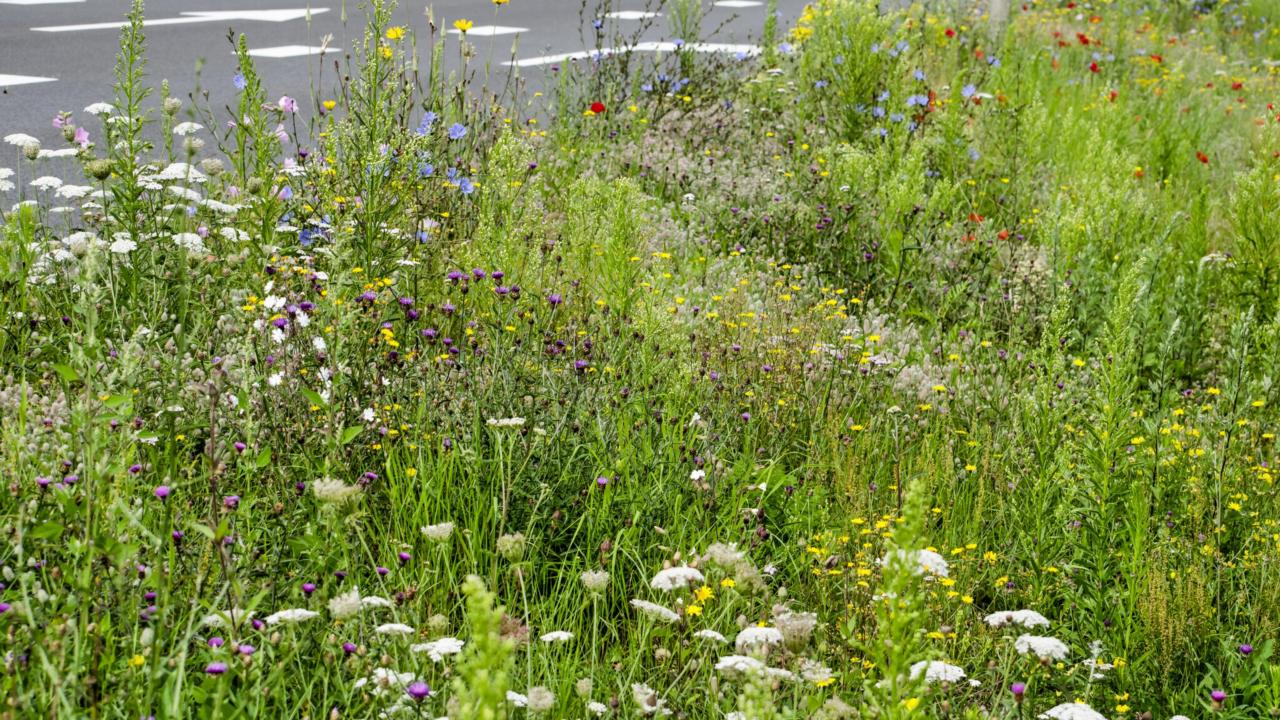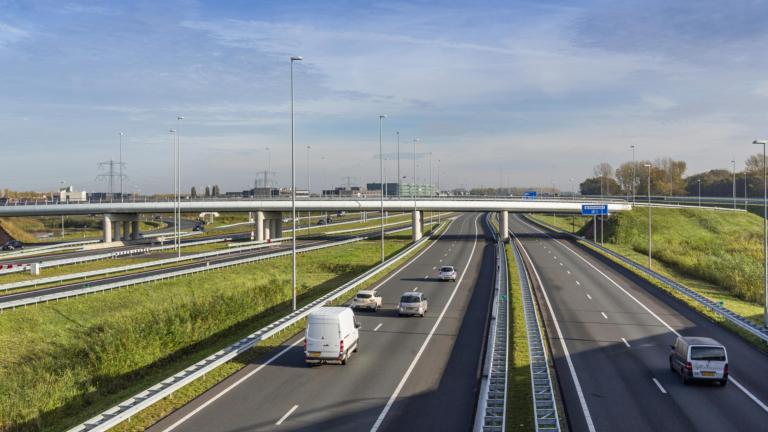
HOCHTIEF PPP Solutions optimizes infrastructure projects over their entire lifecycle. In collaboration with the SAAone highway project (A1/A6) they reached out to the research team from Naturalis to develop a scorecard showing which measures contribute to a biodiverse verge and which are even harmful, and which natural services are linked to them.
Poster_HOCHTIEF_scorecard_ecosystem_services_verge_management_version_Jan_2024_English.pdf
Benefits of biodiversity
What are the ecosystem services of nature-inclusive roadside management? HOCHTIEF PPP Solutions (hereinafter HOCHTIEF), responsible for the operations and maintenance of many roads and their side verges, is already actively executing a variety of (green) measures to enhance the biodiversity in the roadside verges and surrounding areas, like in the SAAone project (A1/A6). However, the direct and indirect effects of these measures are not always clear. That is why they reached out to the research team of Naturalis, including Naturalis researcher Lotte Vroomans, who provided insight into which measures contribute to a biodiverse verge, and how they relate to the various ecosystem services. This acquired knowledge is summarized on a clear poster and scorecard.
Dutch nature network
When you think of nature in the Netherlands, your first thought may well not be roadside, trackside and riverside verges. Nevertheless, these verges cover some fifteen hundred square kilometres; half of the entire nature network in the Netherlands. An area of this size offers huge potential for enhancing biodiversity in our country. Moreover, investing in nature-inclusive verge management pays for itself, over time, in the form of ecosystem services. These are the resources supplied by nature to humans, that contribute to our wellbeing.


Impacton local species diversity
The scorecard developed by Knowledge Naturally! provides a clear picture of precisely which services the appropriate form of natural verge management delivers. The scorecard shows which groups of organisms benefit from the various measures as well as calculating the overall biodiversity score. Based on that knowledge, you can identify which natural services you can expect from which measures.
The scorecard also reveals measures that make little contribution to biodiversity, but which are still often implemented as a means of cutting costs. “Whereas nature-inclusive measures generate nature services, nature-negative measures generate real risks," explained Naturalis researcher Lotte Vroomans. For that reason, the scorecard shows the impact of both nature-positive and nature-negative measures. To clarify this point, Vroomans explained, "A measure that delivers positive impact on biodiversity need not necessarily be more expensive." The research team hopes that this knowledge product will increase awareness of their impact on local species diversity among people working in green area management and policy.
Nature Services
Anyone who opens the scorecard will see a list of 33 measures for verge management, divided into three categories: mowing management, terrain and habitat, and fauna facilities. Naturalis had experts assess this list of measures for their contribution to biodiversity, specifically for different groups of organisms. These experts in green area management, (urban) ecologists and biologists then estimated the impact of the various measures on local biodiversity, and answered the question, 'which species benefit from which form of roadside management?' Naturalis allocated a system of points for each group of organisms, to reflect the biodiversity score of each measure. They also supplemented the list with tips from practice, as well as identifying species that deserve extra attention. The link was then made to the natural services these species provide.
Biodiversityscore
The impact of all these measures is reproduced in the accompanying poster, which is supplemented with a background table outlining important dos and don’ts for implementation, as well as additional information and average biodiversity scores for each measure. The list of measures can be employed by green area managers and policy staff, across the board, and is also applicable to roadside verges on motorways and provincial roads, trackside verges and even the (narrow) strips of green in residential areas.
Ambitions of HOCHTIEF PPP Solutions
Sustainability is a strategy spearhead and part of the DNA of HOCHTIEF PPP Solutions. HOCHTIEF develops and optimises solutions for critical infrastructure projects throughout their lifecycle. Sustainability is an integral part of this lifecycle approach. Their sustainability plan includes carbon reduction targets to help achieve the goals of the Paris Agreement aimed at halting global warming. Biodiversity and water protection are other key elements of their strategy. HOCHTIEF recognises the impact its projects can have on the natural environment and consequently aims to ensure that this impact remains as positive as possible.
Getstarted yourself
Have you been motivated to get started yourself? Check out:
1. The poster for nature-inclusive verge management
2. The scorecardWondering how to take the biodiversity in your roadside to the next level? Check out our first natural roadside management package, with poster and assessment template, here.
Anyone interested in collaborating with Knowledge Naturally! is welcome to contact us via: kennisnatuurlijk@naturalis.nl